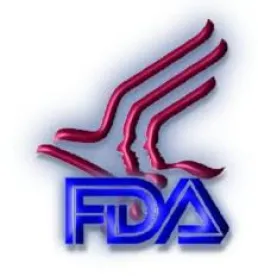On August 31, 2016, the US Food and Drug Administration (FDA) published “Requirements for Foreign and Domestic Establishment Registration and Listing for Human Drugs, Including Drugs That Are Regulated Under a Biologics License Application, and Animal Drugs” (Final Rule), finalizing a 2006 proposal (Proposed Rule) to amend regulations governing drug establishment registration and listing 71 Fed. Reg. 51,276 (Aug. 29, 2006). The Final Rule is effective November 29, 2016, and brings FDA’s regulations governing drug establishment and listing in conformity with amendments to Section 510 of the Federal Food, Drug, and Cosmetic Act (FDCA) (described below), while modernizing submission requirements to maintain consistency with current electronic practices. These changes aim to improve efficiency and reliability. Under the Final Rule, establishment registration drug listing information is generally subject to inspection and public disclosure.
Notably, the Final Rule (1) gives FDA the authority to refuse a new drug application if it is manufactured in whole or in part in an establishment that is not registered or exempt under FDCA, and (2) requires holders of Biologics License Applications (BLA) to electronically report when they withdraw from the sale of licensed biological products.
After FDA issued the Proposed Rule, US Congress passed the Food and Drug Administration Amendments Act (FDAAA) in 2007, which required the electronic submission of drug establishment registration and listing information [Pub. L. 110–85 (2007)], and the Food and Drug Administration Safety and Innovation Act (FDASIA) in 2012, which amended the deadline for and information required with an annual establishment registration [Pub. L. 112–144 (2012)]. FDA subsequently issued its “Guidance for Industry on Providing Regulatory Submissions in Electronic Format—Drug Establishment Registration and Drug Listing” 74 Fed. Reg. 26, 248 (June 1, 2009) to explain electronic submissions of registration and listing information consistent with the FDAAA 71 Fed. Reg. 63,276 (Oct. 31, 2006).
The Final Rule includes few departures from the Proposed Rule. In response to comments, FDA did not include the requirement that FDA develop National Drug Codes (NDCs) to assign to listed drugs or the requirement that the NDC appear in human-readable form on the label of each listed drug. FDA indicated that it expects to address drug / device combination product registration and listing requirements in the future.
The remainder of this article highlights additional provisions.
Who Does the Rule Cover?
-
The Final Rule regulates domestic and foreign drug manufacturers, repackers, relabelers and salvagers, and requires annual electronic registration and listing, while carving out exemptions (e.g., certain “import for export” drugs). The Final Rule also covers establishments engaging in these activities under a BLA or human cells, tissues, and cellular and tissue-based products (HCT/Ps) regulated under Section 505 of the FDCA or under Section 351 of the Public Health Service Act.
-
FDA will accept registration and listing information from anyone properly authorized to act as an agent for the actual manufacturer, including private label distributors.
-
It is particularly important to note that the drug listing requirement applies to drugs manufactured, repacked, relabeled or salvaged for commercial distribution only, while the registration requirement applies to establishments where drugs are manufactured without regard to whether the drug is commercially distributed.
Content of Registration and Listing
-
The Final Rule includes specific content requirements for registration and listing. Pursuant to the FDASIA, the Final Rule amends the registration requirements to include a Unique Facility Identifier (UFI), which is currently a DUNS number, assigned and managed by Dun & Bradstreet. The FDASIA also requires establishments to provide a point-of-contact email address.
-
Because FDA’s drug listing system cannot retrieve inactive ingredient information from approved applications, a registrant must provide the name of each inactive ingredient in a listed drug it manufactures—the drug’s US application number will not suffice. Although FDA is not currently collecting advertisements as part of drug listing information, it may request a representative sampling of advertisements in the future.
-
The Final Rule includes additional NDC requirements, such as format, length, changes requiring a new NDC and restrictions.
-
Under the Final Rule, FDA’s center directors may now approve additional standards or formats for bar code label requirements.
Effective Dates
-
Electronic registration and listing submissions under Part 207 have largely been implemented under FDA’s Guidance. As of November 29, 2018, to purge outdated information, FDA will remove from the current database any previous registration and listing information submitted in the past on paper and not updated with a more recent electronic submission. However, FDA may grant firms waivers from the electronic submission requirement. The requirement for electronic registration and listing under Parts 607 and 1271 for drugs regulated under a BLA or HCT/Ps regulated under Section 505 of the FDCA or Section 351 of the Public Health Service Act, respectively, will be effective November 29, 2017.
-
FDA encourages establishments to submit listing updates at the time of any change affecting the previously submitted information, and at a minimum, each June and December. As part of the annual registration process, establishments also must submit a no-change certification if there are no changes to the previously submitted listings.
Addition and Clarification to Definitions
-
“Active pharmaceutical ingredient” has the same meaning as “bulk drug substance.”
-
“Salvage” means “the act of segregating out those finished products that may have been subjected to improper storage conditions for the purpose of returning the products to the marketplace and includes applying manufacturing controls such as current good manufacturing practice (CGMP).”
-
Establishment registration number” means the number assigned by FDA to the establishment during the establishment registration process [currently, the FDA Establishment Identifier (FEI)] and is distinct from the “Unique Facility Identifier” required by the FDASIA).
-
Clarifying “commercial distribution” to exclude “active pharmaceutical ingredient” so internal or interplant transfers are not treated as commercial distribution. Transfers between a registered establishment and a marketing authorization holder pursuant to a contractual relationship still constitute commercial distribution.
-
Content labeling” is used to describe some, but not all, labeling that must be submitted with human and animal drug listing information.
-
A “private label distributor,” whose label or trade name is on a commercially distributed drug, does not have to register or list as long as it does not manufacture, repack, relabel or salvage a drug. Private label distributors still must apply for a NDC labeler code.
-
A drug’s “end marketing date” is the expiration date of the last lot manufactured, repacked, relabeled or salvaged and should be included when reporting that a listed drug has been discontinued.






 />i
/>i

